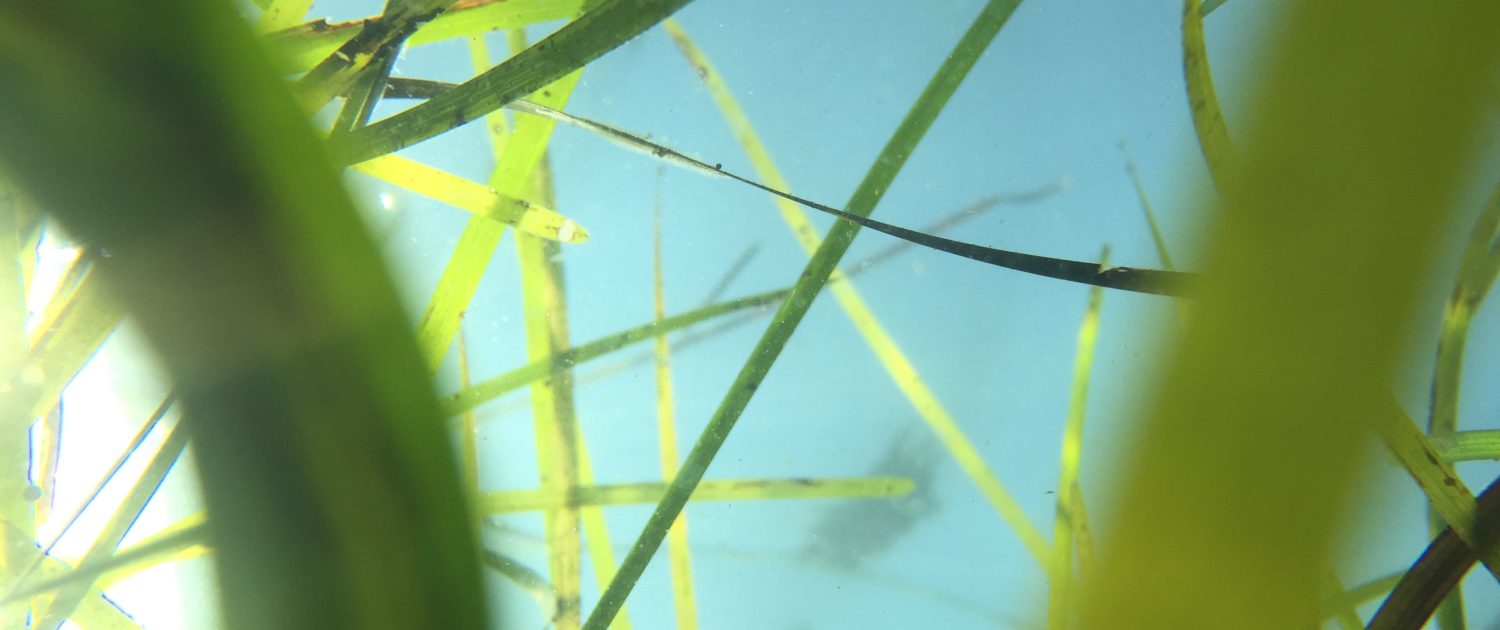MIT Sea Grant Coastal Ecologist and researchers from BU, US EPA, CZM, ICTA – UAB publish eelgrass article in Estuaries and Coasts

MIT Sea Grant Coastal Ecologist Dr. Juliet Simpson worked with researchers from Boston University, US EPA, CZM, and the Institut de Ciència i Tecnologia Ambientals (ICTA – UAB) in Spain, to publish a recent article in the Journal of the Coastal and Estuarine Research Federation, Estuaries and Coasts.
The team researches the need to protect coastal eelgrass ecosystems in order to compensate for increasing carbon dioxide in our atmosphere. Read the abstract below, or view the full article here.
Estuaries and Coasts: Factors Influencing Carbon Stocks and Accumulation Rates in Eelgrass Meadows Across New England, USA
A. B. Novak & M. C. Pelletier & P. Colarusso & J. Simpson & M. N. Gutierrez & A. Arias-Ortiz & M. Charpentier & P. Masque & P. Vella
April 30, 2020
Abstract
Increasing the protection of coastal vegetated ecosystems has been suggested as one strategy to compensate for increasing carbon dioxide (CO2) in the atmosphere as the capacity of these habitats to sequester and store carbon exceeds that of terrestrial habitats. Seagrasses are a group of foundation species that grow in shallow coastal and estuarine systems and have an exceptional ability to sequester and store large quantities of carbon in biomass and, particularly, in sediments. However, carbon stocks (Corg stocks) and carbon accumulation rates (Corg accumulation) in seagrass meadows are highly variable both spatially and temporally, making it difficult to extrapolate this strategy to areas where information is lacking. In this study, Corg stocks and Corg accumulation were determined at 11 eelgrass meadows across New England, representing a range of eutrophication and exposure conditions. In addition, the environmental factors and structural characteristics of meadows related to variation in Corg stocks were identified. The objectives were accomplished by assessing stable isotopes of δ13C and δ15N as well as %C and %N in plant tissues and sediments, measuring grain size and 210Pb of sediment cores, and through assessing site exposure. Variability in Corg stocks in seagrass meadows is well predicted using commonly measured environmental variables such as grain size distribution. This study allows incorporation of data and insights for the northwest Atlantic, where few studies on carbon sequestration by seagrasses have been conducted.




